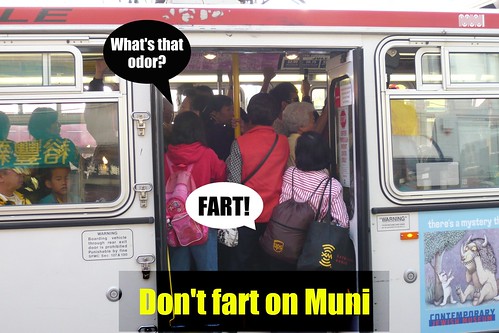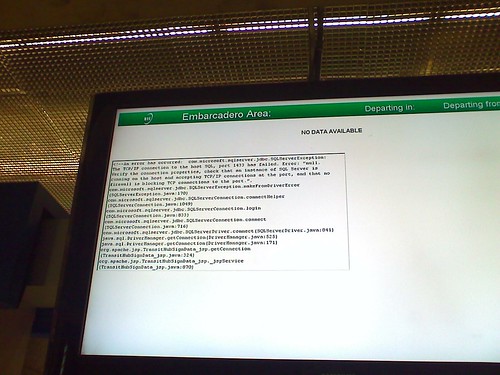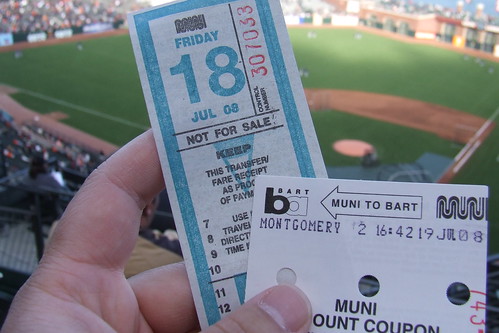
The San Francisco Giants is the first Major League Baseball team to sell all their tickets through "dynamic pricing" where tickets are sold at market value and varies on a number of factors:
- The popularity of the team. Dodgers games always costs more.
- Who will be pitching at the games.
- How the Giants are doing. Winning streak or getting a major ass kicking?
- Giveaways such as bobbleheads and tote bags.
From my understanding, the Giants are doing this so they can fill-up the stadium. Very popular games and giveaways will always bring in the fans, no matter how high the price will be. For very unpopular games or situations where the Giants are not doing so great, they will lower prices to reflect it so they can fill-up the stadium for bargain seekers.
The old way they used to do it is the prices never changed regardless of whatever team was visiting. Just a year ago, they changed the structure to a program where the most affordable seats was during weekday games, second most expensive was Friday-Sunday, and they also had "premium" games for those popular visiting teams visiting AT&T Park regardless of what day the games were held.
I find the dynamic pricing structure to have some serious problems. (Crazy Crab would be pissed) The dynamic pricing master list is posted on the SF Giants website and reflects pricing for all games this season, including ones that have already concluded. I would assume many of you would believe this is the official market pricing for games, if I were to buy a ticket immediately through their ticketing contractor, Tickets.com.
Actually... that is the big problem. The dynamic pricing list doesn't reflect the actual prices offered by Tickets.com. When you click on the "T" square on the far left, the prices don't match up for games for about the next 30 days.
- Example: I want to get a ticket for the view reserved infield section on May 29th. The dynamic pricing list shows a ticket will cost me $13.00 (face value). But, when I click on the "T" symbol, the ticketing website tells me the area costs $15.50 per ticket, an increase of $2.50 per ticket.
I've written to the SF Giants about this problem and they said "the price list is the base price at the beginning of the season." I argued that is not true. They have changed prices on a frequent basis on the dynamic pricing page and it has been properly reflected on the Tickets.com website, until now. The example I provided is I purchased a ticket to an exhibition game against the Oakland A's at AT&T Park and paid $3.50 per ticket (face value) and the price was the same as the dynamic pricing list I printed out earlier that day. When the game approached, the dynamic pricing list was updated and reflected the new price, $5 a ticket. Basically, their representative who replied back to me basically said something that is not true.
It leaves fans confused about how the system works. Who is maintaining the accurate market rate prices on the tickets? Should we trust the dynamic pricing list to tell its fans what the actual prices are, or should we trust it in the ticketing processor, Tickets.com? Fair weather fans may just decide to abandon buying tickets from the Giants (via Tickets.com) because they would refuse to pay a higher price for a ticket when the dynamic pricing list mentions a lower price.
It would be in the best interest of the SF Giants to simply continue to update the dynamic pricing list while Tickets.com has the same exact prices reflected.
I find that people depend on that pricing list to see if the tickets they previously purchased has gone up or down, but also for those who want to buy tickets to rely on that list when purchasing, whether it be online or in-person. Also, the list is useful for those people selling their extra tickets on Stubhub; if they want to sell their ticket with a minimum financial loss, they'd view the dynamic pricing list and sell the ticket at a lower cost than what the Giants are offering. But if it's for a popular game and they want to sell it quick while making extra money, the list is also helpful to see how much the Giants are charging.
--------------------
Here's my e-mail conversation with the Giants:
Initial question:
I want to make you aware that while your dynamic pricing list shows the pricing of seats in all the sections, I was looking at a few games for the next month (including 5/29) and while upper deck reserved infield on dynamic pricing says $13.00, clicking to order the tickets online says the price is $15.50. Other games reflect a difference around $1 to as much as $2.50 difference between the dynamic page and online ordering via Tickets.com.
SF Giants Response:
Thank you for contacting us. Yes, we are aware of the current price changes from the pricing list. Although some prices change, some stay the same. Keep in mind that prices change as we sell tickets for those events in advance. The price list is the base price at the beginning of the season.
Regards,
Ticket Services SF Giants
My reply:
Thanks for the e-mail, but I need to inform you that people will always believe the dynamic pricing webpage maintained on the Giants website is the true prices, and will reflect it when purchasing it online or through an official ticket office (e.g. Giants Dugout stores).
Here's a perfect example:
Once the dynamic pricing list was released to the public, I purchased a ticket to the first two pre-season games against the Oakland A's. The price I paid for at the Giants Dugout at AT&T Park was $3.50 each (no surcharge) and the same price was reflected on the dynamic pricing page. But, when the game day was approaching, the price on the dynamic website was raised to $5.00 a seat and was also reflected on the ticket purchasing as well. In this example, there is no grounds to your claim that the "price list is the base price at the beginning of the season" as your list has been shown to change on a near daily basis on the dynamic pricing list.
The fans depend on your dynamic pricing list to see if it's a good time to buy a ticket; and that price should be immediately reflected if they buy it immediately online or buy it in-person at a tickets.com outlet with a list very recently printed from their computer.


















